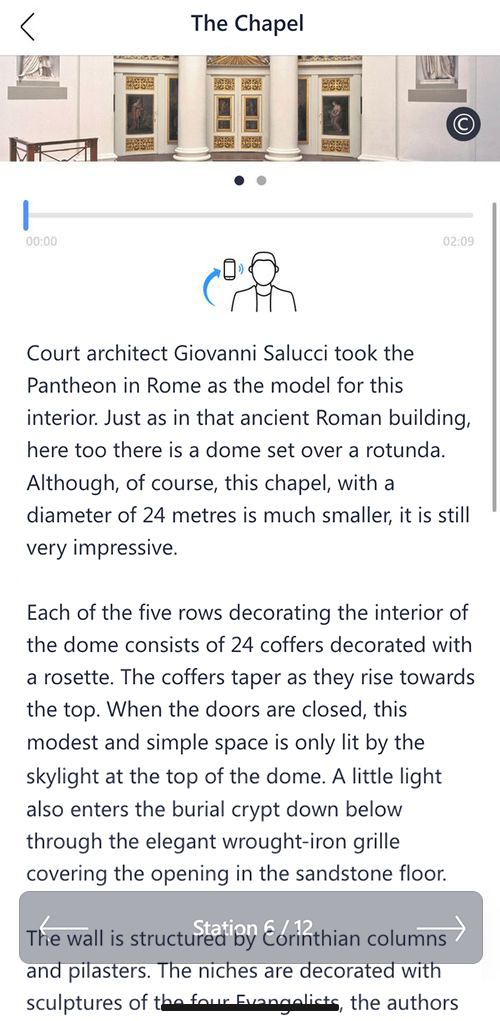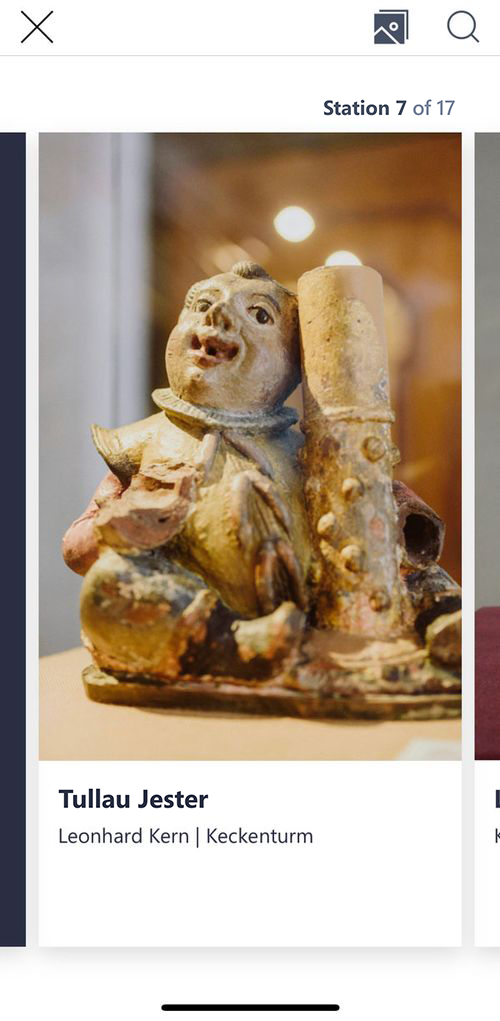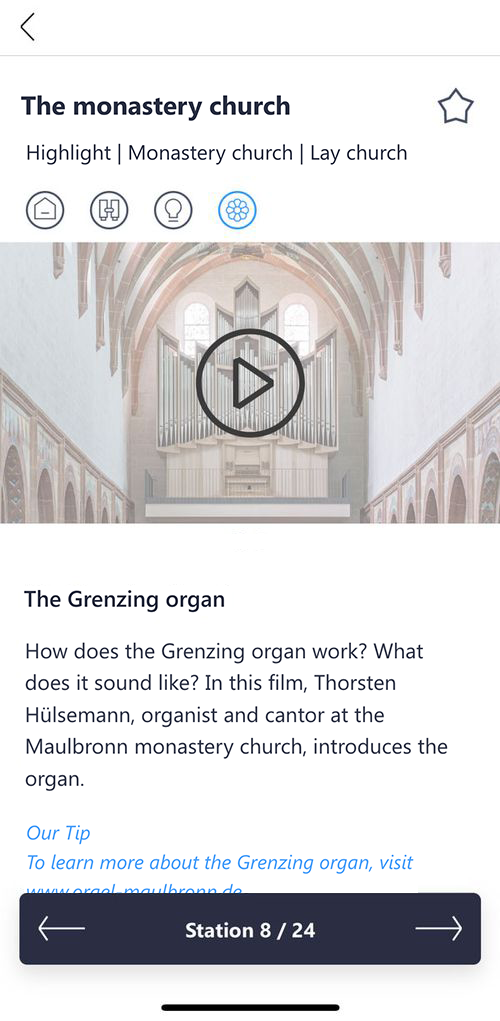
A control element that fades in and out for better readability. Here in the state just before becoming invisible.
User-centered development for platform users and visitors.
An early monamu pilot received a rating of 4.1 out of 5 for user-friendliness in 2019 during its deployment at the Triennale Fellbach, based on an evaluation with over 100 participants. Since then, we have worked to further improve the user experience through no fewer than five scientific studies, along with numerous tests and evaluations with users and cultural professionals.
We have aimed to address every detail. For example, a control element fades out during scrolling to provide a more spacious and uninterrupted reading area and reappears when the user changes direction. It’s a small detail, but it actually makes reading much more pleasant for the user.








